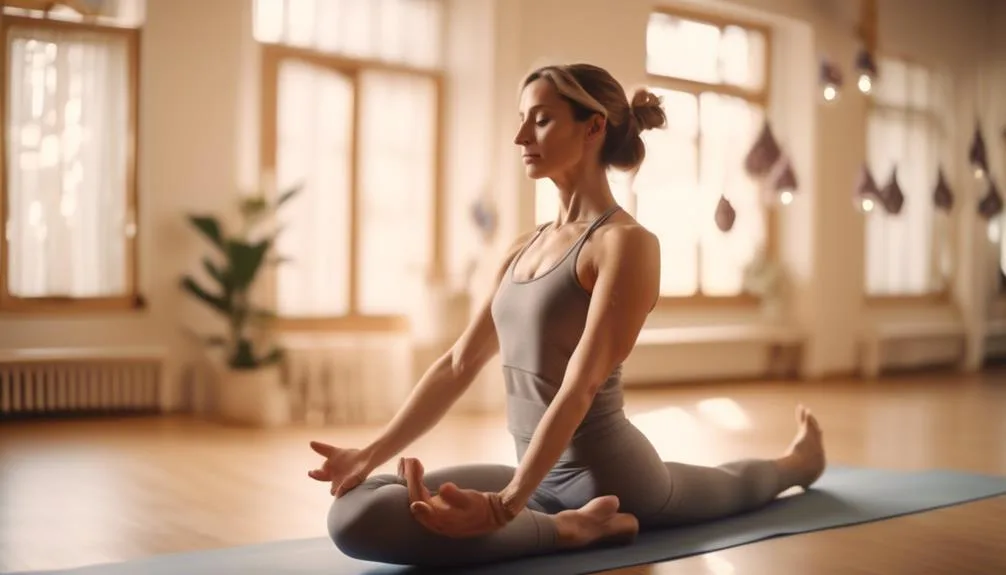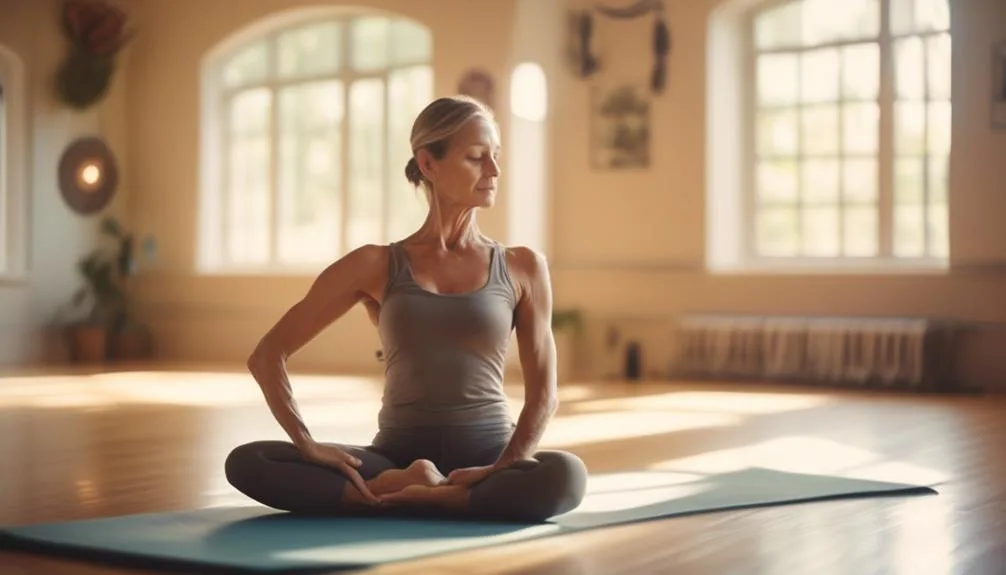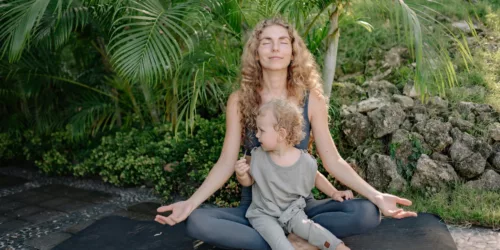Unlock Hip Flexibility With the Powerful Butterfly Stretch
In today's fast-paced world, where sedentary lifestyles are becoming more prevalent, the importance of maintaining flexibility, particularly in the hips, cannot be overstated.
The Butterfly Stretch, a cornerstone in the realm of flexibility exercises, offers a simple yet effective method for enhancing hip mobility, easing lower back tension, and improving groin range of motion. This exercise, which involves a seated position with the soles of the feet together and knees splayed outward, targets the often overlooked inner thigh and hip regions.
While the stretch is lauded for its accessibility and adaptability through various modifications, understanding the proper technique and cues is vital to reap its full benefits and mitigate the risk of injury.
As we explore the nuances of the Butterfly Stretch, including expert insights from Dean Pohlman, an authority in the field of yoga and flexibility, we invite you to consider the profound impact this seemingly modest exercise can have on your overall well-being and physical performance.
The journey to unlocking hip flexibility begins with a closer examination of the mechanics, benefits, and expert recommendations surrounding the powerful Butterfly Stretch.
Key Takeaways
- The butterfly stretch is a seated stretch where you sit on the floor with feet together and knees out to the sides.
- Engaging the glutes and core is important for proper form and to avoid strain on the knees.
- Sitting upright and inhaling while sitting taller can help deepen the stretch in the groin.
- Modifications such as sitting on a block or placing hands behind the hips can provide additional support during the stretch.
Butterfly Stretch Basics
The butterfly stretch is commonly used to enhance hip flexibility and alleviate lower back tension. It begins with the fundamental position of sitting on the floor, feet pressed together with knees splayed outward.
A critical analysis of the butterfly stretch reveals common mistakes. These include insufficient engagement of the glutes and a tendency to lean forward, which strains the back rather than targeting the hips.
To address these pitfalls, variations can be incorporated. One variation is to elevate the hips on a block for improved alignment. Another is to incorporate dynamic movements to progressively deepen the stretch.
Progressions in the butterfly stretch might involve gradually moving the heels closer to the body while maintaining an upright posture. This ensures that the stretch remains within a comfortable range.
This analytical approach emphasizes the importance of technique, gradual improvement, and personal adaptation in mastering the butterfly stretch.
Cues and Modifications

To enhance the effectiveness of the butterfly stretch and ensure it meets individual needs, it's crucial to consider various cues and modifications tailored to different levels of flexibility and physical conditions. The benefits of butterfly stretch are maximized when individuals apply proper technique and adjust the stretch to their unique bodies.
| Cues | Modifications |
|---|---|
| Engage glutes | Sit on a block for added height |
| Roll shoulders | Hands behind hips for support |
| Engage core | Move feet farther from hips |
| Pull tailbone down | Pull heels closer without strain |
These adjustments not only enhance the benefits of the butterfly stretch but also introduce variations of the butterfly stretch to accommodate a wider range of practitioners, ensuring a safer and more effective practice.
Sensations to Seek and Avoid

Building on the foundation of proper cues and modifications, it is crucial to understand the sensations one should seek and those to avoid during the butterfly stretch to ensure a safe and effective practice.
A common mistake is pushing the knees down aggressively, which can strain the inner thighs and knees. Instead, focus on the sensation of a gentle stretch through the groin area, indicating the correct engagement of muscles. Avoid pain in the knees by adjusting the feet's distance from the hips, which can be fine-tuned through variations and progressions.
Sensations to embrace include a deepening stretch with each exhale, an active engagement of the glutes, and a lengthening of the spine. Recognizing these sensations guides practitioners away from harmful practices and towards a beneficial stretch.
Expert Insights From Dean Pohlman

Drawing on his extensive experience as a yoga instructor, Dean Pohlman offers invaluable insights into enhancing hip flexibility through the butterfly stretch, emphasizing proper technique and mindful engagement. He highlights the benefits of hip flexibility, such as improved posture, reduced back pain, and enhanced athletic performance.
Pohlman also addresses common mistakes in the butterfly stretch to ensure maximum effectiveness and safety. These include properly aligning the spine to avoid slouching, engaging the core muscles for stability, applying gentle pressure on the knees downward without forcing, keeping the feet as close to the body as comfortable to deepen the stretch, and breathing deeply to facilitate relaxation and increase the stretch.
Pohlman's guidance encourages a methodical and attentive approach to practicing the butterfly stretch, maximizing its benefits while minimizing the risk of injury.
Additional Stretching Benefits

After exploring the technique and benefits of the butterfly stretch under Dean Pohlman's guidance, it becomes pertinent to examine the broader advantages of incorporating stretching into one's fitness regimen. Stretching, beyond the butterfly stretch, offers a multitude of health benefits that extend across various aspects of physical well-being. It is instrumental in increasing range of motion in joints, improving posture, and enhancing overall flexibility. An analytical and detailed examination reveals that regular stretching routines can significantly contribute to a balanced fitness regimen, promoting not only flexibility but also aiding in injury prevention and recovery.
| Benefit | Description |
|---|---|
| Increasing Range | Enhances joint mobility and flexibility. |
| Improving Posture | Corrects alignment and reduces strain. |
| Injury Prevention | Lowers the risk of strains and sprains. |
| Enhanced Recovery | Speeds up the healing process post-exercise. |
| Stress Reduction | Promotes relaxation and decreases tension. |
Frequently Asked Questions
Can the Butterfly Stretch Help Improve Posture?** While the Primary Focus Is on Hip Flexibility and Lower Back Tension, Understanding if and How This Stretch Might Contribute to Better Overall Posture Could Be Insightful.
The butterfly stretch can indirectly improve posture by promoting spinal alignment and enhancing core strength. Through the alleviation of hip tightness and lower back tension, it facilitates a more upright and balanced posture.
Is the Butterfly Stretch Safe During Pregnancy?** Given the Unique Physical Considerations During Pregnancy, It Would Be Valuable to Know if This Stretch Is Recommended or if There Are Any Specific Modifications That Should Be Made.
Navigating the terrain of pregnancy requires careful consideration, especially when incorporating stretches. For the butterfly stretch, modifications and comfort adjustments are essential. Pregnant individuals should prioritize gentle movements and consult healthcare providers for personalized guidance.
How Often Should the Butterfly Stretch Be Performed for Optimal Results?** Beyond the Duration of Each Stretch, the Frequency of This Exercise Within a Weekly Routine Could Help Individuals Tailor Their Flexibility Goals.
For optimal results, incorporating the butterfly stretch into your routine 3-4 times weekly is recommended. Achieving flexibility milestones can be supported by using stretching accessories, such as blocks, to enhance the depth and effectiveness of the stretch.
Can the Butterfly Stretch Aid in Recovery From Lower Body Injuries?** for Those Recovering From Injuries to the Legs, Hips, or Lower Back, It Would Be Beneficial to Understand if This Stretch Can Be a Part of Their Rehabilitation Process.
The butterfly stretch can significantly aid in the rehabilitation of lower body injuries by promoting flexibility benefits and facilitating injury prevention. Its gentle, controlled motion helps in the recovery process without straining affected areas.
Are There Any Specific Breathing Techniques That Should Be Paired With the Butterfly Stretch?** Since Breathing Can Significantly Impact the Effectiveness of Stretching Exercises, Any Recommended Breathing Patterns or Techniques That Enhance the Benefits of the Butterfly Stretch Would Be Valuable.
Breath control acts as the bridge to enhanced flexibility during the butterfly stretch. Employing relaxation techniques, such as deep diaphragmatic breathing, can significantly amplify the stretch's efficacy, fostering a deeper, more beneficial muscle release.
Conclusion
In conclusion, the Butterfly Stretch emerges as a beacon of flexibility and mobility, akin to the transformative journey of a butterfly. Through its precise execution, guided by expert insights and adaptable modifications, this stretch fosters an environment where the hips' potential can unfurl.
As the wings of a butterfly stretch towards the sky, so do the benefits of this exercise extend beyond mere physical flexibility, promoting a harmonious alignment of body and mind, and paving the way for improved overall well-being.






